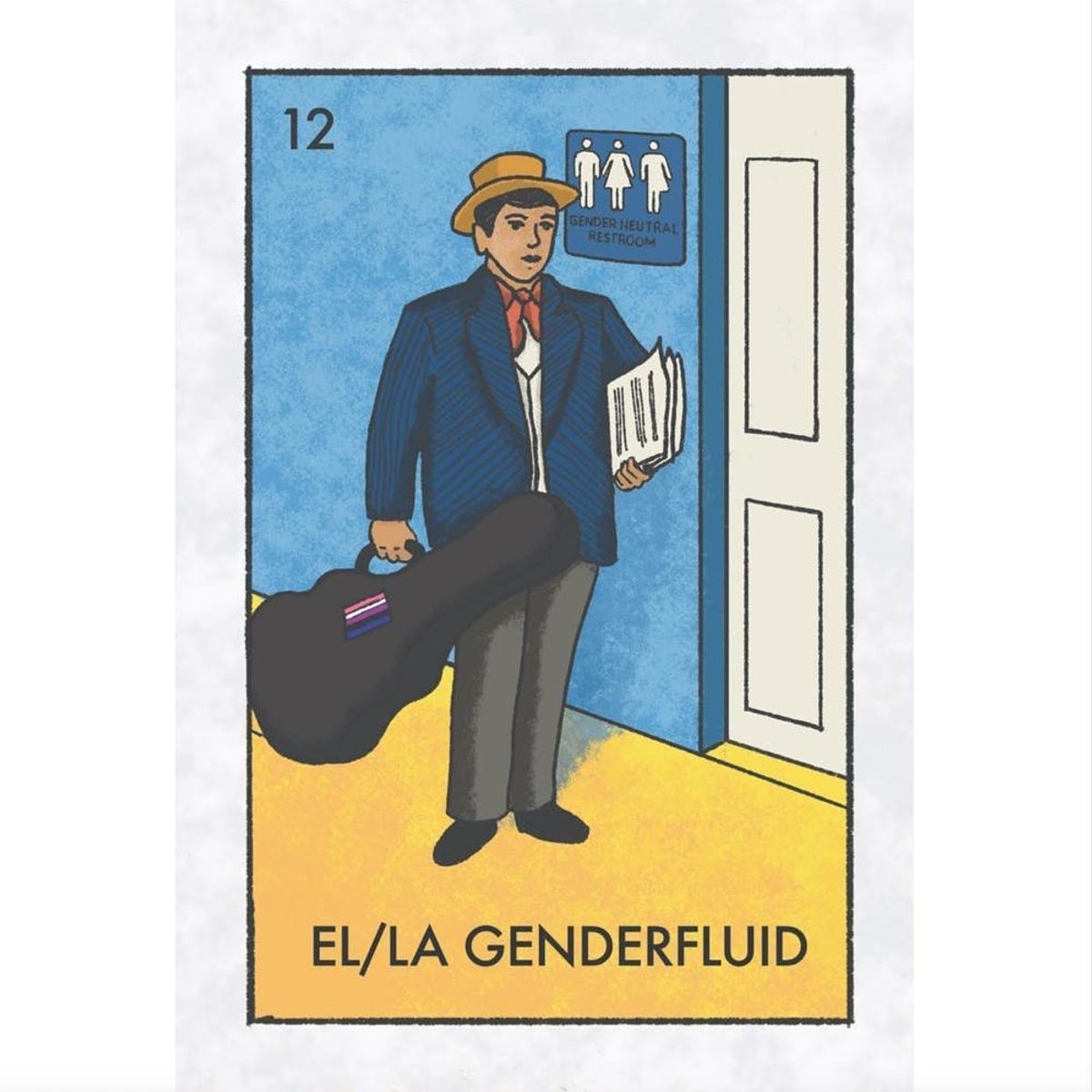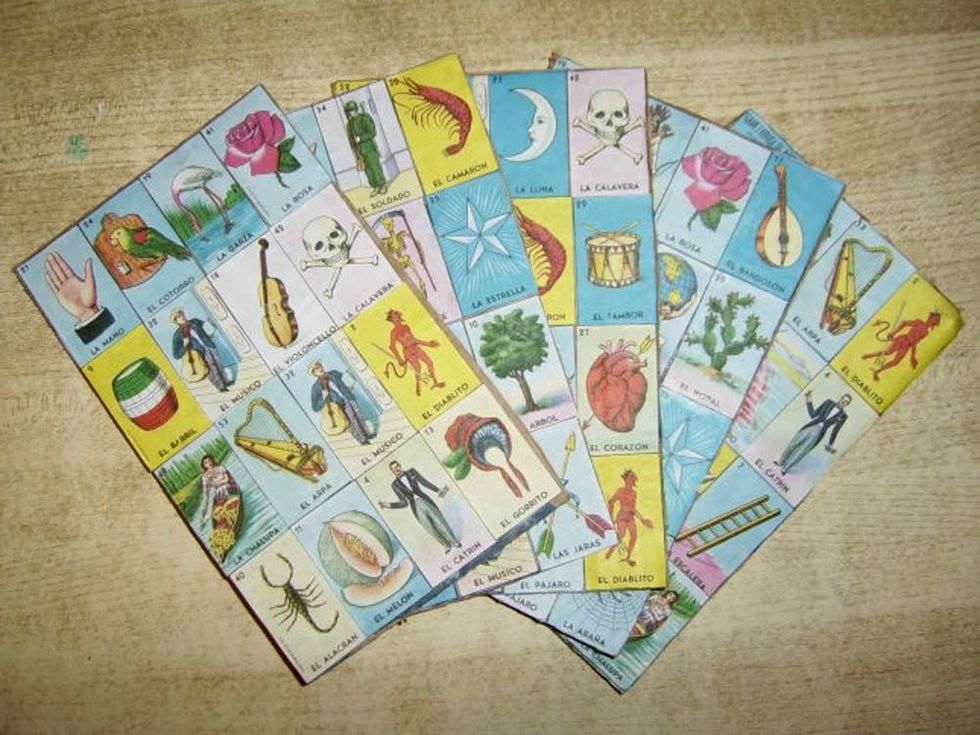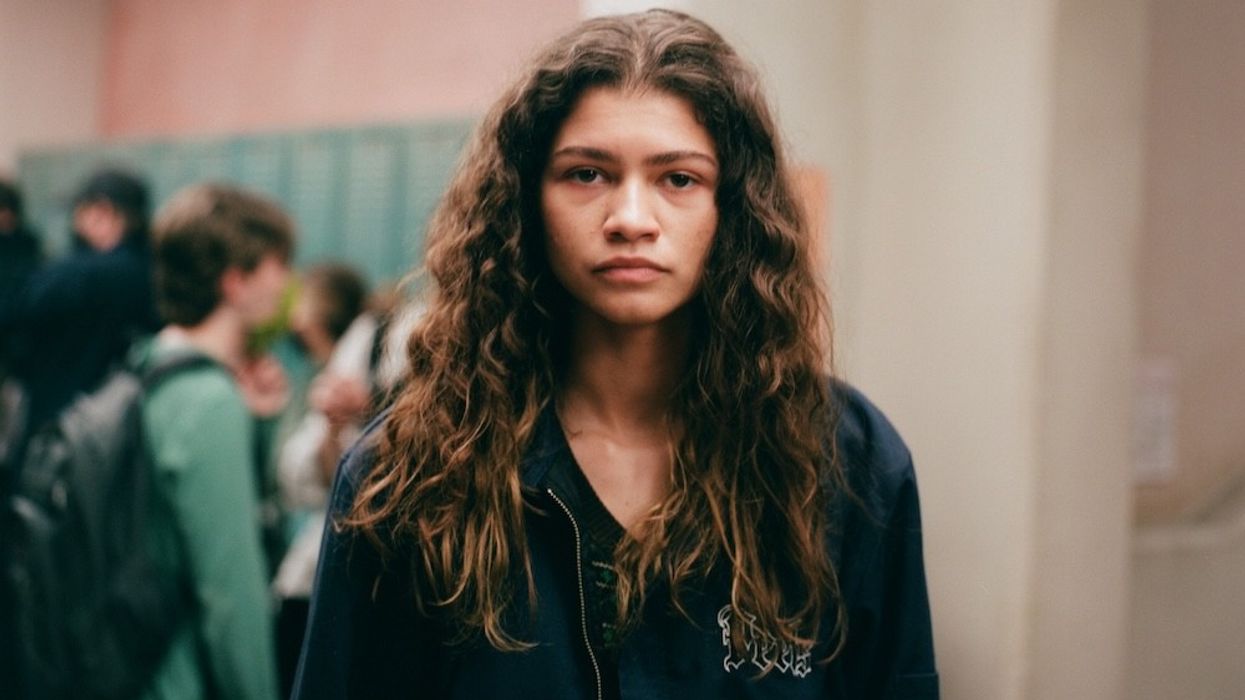The beautiful evolution of the time-honored family pastime is keeping culture alive.
Artists Are Reinventing ‘La Lotería’ for a New Generation of Mexican-Americans

In honor of Hispanic Heritage Month (September 15-October 15), we’re spotlighting stories about Latinx culture, community, and identity in the diaspora and beyond.
*
Some of my fondest memories as a child involve gathering around the dining room table for a round of Lotería. Playing the game of Lotería — which is kind of the Mexican version of Bingo — marked some of the rare times growing up when children could socially convene with adults and not feel like a burden, but rather, like peers. I consider it one of the liveliest traditions of our culture.
If you’ve never witnessed people playing Lotería, let me briefly describe it to you. Adults, old and young, compete alongside children, each player with their head tilted down to focus intently on their Lotería board — looking up only to sneak glimpses of their opponents’ cards to see if anyone is close to beating them. At each turn, the dealer holding the deck of cards pulls out each new card (from the top and bottom of the deck), yelling out each character: “La Bota!,” “La Sirena!,” “El Alacrán!”

For bilingual kids like myself, playing Lotería is the perfect way to brush up on Spanish. (Those struggling with their native tongues can expect to get clowned for incorrectly pronouncing “El Violoncello,” or “El Cantarito.”) The tokens for marking each character on the individual cards are typically uncooked beans, and people usually play to win money — about 10 cents a round (we played for at least a quarter!) — but it’s up to the players to decide the monetary stakes. No matter the amount, the cash pot is the beauty of the game: It becomes competitive, making it extra hilarious and loud.
Lotería, however, also has some major drawbacks. The most popular version of the game — and the one we still play to this day — was created in 1887 by the French businessman Don Clemente Jacques and is easily found on Amazon. The Don Clemente version has several racist (“El Negro” — a Black entertainer — for one) and sexist cards that play into the machismo of Hispanic stereotypes: “El Valiente” (the brave man) “El Mundo” (which shows a man holding the world on his shoulders, like Atlas), and “La Sirena” (a topless mermaid), among others.
Despite its failings, Lotería — and our deep attachment to the game — doesn’t seem to be fading at all. In fact, it’s grown considerably. Just do a quick Google search of Lotería and you’ll find a slew of images on Pinterest and items for retail on Etsy. Lotería cards can be found on body parts, as wedding themes, and even as backdrops to novels like Lotería: A Novel by Mario Alberto Zambrano (which, by the way, is very good).
While the original version isn’t the most ideal version to teach to children, there are, however, so many new incarnations of Lotería that can inspire just about anyone. Mike Alfaro is the Guatemalan creator behind the “Millennial Lotería,” which depicts a “new generation” of Lotería cards and is available for pre-order on Amazon.
“I had these great memories of us playing Lotería when I was growing up,” Alfaro said in an interview with Vivala last year. “But when I started looking at the old cards, I realized how outdated some of the images were.”
So, his version, which is also on sale, has characters that are more relatable to a new generation of Latinx including “La Debt Student,” “El Global Warming,” and “Tinder.”
“I consider myself a product of globalization,” Alfaro added. “I grew up in Guatemala for 17 years, but I watched everything from The Simpsons to Friends on cable. American TV had a big influence on me. So I think it’s no surprise that the work I create is both Latino and American. It’s just a reflection of who we are today, not the old stereotypes of yesterday.”
Another Latinx artist, Mexican designer Ilse Valfré, created her own feminist Lotería deck and clothing designs, all for sale on her site.
The Loteria Collection Just Landed 😱https://t.co/JbLhjuVByw pic.twitter.com/UDU43sc5Z7
— Ilse Valfre (@valfre) March 22, 2018
Valfré told Elite Daily that she had first created “La Sirena” as a standalone work of art, but fans requested more.
Valfré also reminisced about her memories playing the game as a child, saying: “I’ve played at birthday parties, school events, etc. My earliest memory was in kindergarten, and I remember I was so excited because I won the first round and the prize was a lollipop.”
What’s extraordinary about these offshoots of the traditional Lotería game is that the Latinx generation is amazingly able to hold close their heritage while creating a new narrative for the next generation. We’re pretty good at honoring our culture, while also redefining what we’re all about — and I can’t wait to see how La Lotería will evolve next.
(Photo by Alex Covarrubias/Wikimedia Commons)



















